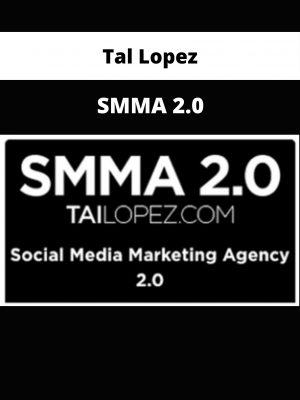Molly Bishop Shadel – How to Speak Effectively in Any Setting
$234 Original price was: $234.$67Current price is: $67.
Shopping Instructions:
- DISCOUNT 15% : SHOP15
- Product Delivery: Within 1 – 12 hours after purchase.
It is surprising how many occasions for public speaking manifest in our private lives. Whether we are called upon to toast at a wedding, say a few words at a bat mitzvah, address the graduating class at our alma mater,or speak at a funeral, we will almost unavoidably be asked to step up to the podium at some point in our adult lives. File Size: 9.56 GB Format File: [25 MP4]
Molly Bishop Shadel – How to Speak Effectively in Any Setting
The power of an effective speech is undeniable. It has the capacity to engage, inform, motivate, and create change in an audience—and even in the world at large. And, despite how often many of us are required to speak in public, it can be intimidating.
In How to Speak Effectively in Any Setting, a 24-lesson course with Molly Bishop Shadel, Professor of Law at the University of Virginia School of Law, you will learn the fine art of speaking clearly, effectively, and persuasively in contexts across the spectrum, from the board room to the bar room and everywhere in between. Professor Shadel teaches you the underpinnings of effective speech writing and skilled delivery in settings both personal and professional, giving you the tools you need to increase your confidence and enhance your presentation.
Ethos, Pathos, Logos—Writing for Public Speaking
One of the first aspects of public speaking you will engage with is what is sometimes known as the “rhetorical triangle,” three aspects of speech whose terms were first coined by Aristotle.
Ethos: Does your audience see you as a person possessed of good sense, good character, and good will? Do you project what Aristotle called ethos? Learn the importance of knowing what you are talking about; showing yourself to be a competent and qualified speaker; and, ultimately, showing yourself to be a person interested in and concerned for the experience of his or her audience.
Pathos: How can you engage your audience emotionally? How can you ensure that they care about your topic and connect with you and your content in a way that is compelling and personal? Explore the impact of audience awareness and how it can yield what Aristotle called pathos—an investment in your topic by the audience. Tell a good story, connect emotionally, avoid becoming overwhelmed, but remain engaged. Your audience will care because you do.
Logos: Logos is the art of making your logic clear. Without it, your audience can get bogged down in confusing content and unnecessary details. Professor Shadel helps you learn how to organize and pare your material to make your point effectively and succinctly. Your audience will understand your main ideas and remember the key content of your speech because it is straightforward, easy to follow, and memorable.
With an eye toward the role of ethos, pathos, and logos in effective writing and presentation, Professor Shadel helps you organize and construct a speech in ways that are different from what you might write for other purposes. Focusing on timing and environment in audience experience, you will learn to structure and deliver speeches that your audience can easily follow. She will help you to recognize and disarm a wide range of logical fallacies, distinguishing the effective persuasive argument from its dishonest cousin, propaganda.
Practice and the Art of Presentation
Even with a well-crafted speech, the performance element of public speaking can seem overwhelming. Certainly, having a text that has a great theme, clear points which are important to your audience, a great story to illustrate one or more of those points, and a satisfying conclusion will go a long way toward making you successful. But what role does presentation play in establishing ethos, pathos, and logos, and the general effectiveness of your well-written speech
In several lessons, Professor Shadel leads you through practice exercises used by actors, including rehearsal techniques like Stanislavski’s Method, which can help you keep your focus on your primary intention and purpose at every moment during your speech. She encourages you to be so familiar with your speech and its structure that you can let go of the script a little and effectively engage with your audience. Try creating a very short “elevator pitch” of your speech to identify your central message, then practice out loud, imagining different audiences. Break your speech into beats for breath and motion and take extra time to prepare your opening and closing.
Practice, preparation, and some tricks from the actor’s bag will support a great speech with equally skilled physicality. But what do you do when the all-too-common anxiety about public speaking threatens to derail your hard work? First, understand that even people who speak for a living sometimes struggle with stage fright. You are not alone. Then, let Professor Shadel teach you how to change your thinking to change your feelings about the experience, reminding you that you have something important to share with your audience. Tips on deep breathing and mindfulness help neutralize fear and support relaxation and confidence. The effective preparation and use of visual elements give professional flair to your presentations.
Personal Occasion Speaking
It is surprising how many occasions for public speaking manifest in our private lives. Whether we are called upon to toast at a wedding, say a few words at a bat mitzvah, address the graduating class at our alma mater,or speak at a funeral, we will almost unavoidably be asked to step up to the podium at some point in our adult lives.
Professor Shadel returns again to Aristotle’s wisdom as she explains the three types of speech, including one most appropriate to such events: epideictic. These speeches, “fit for display and intended to praise or blame,” are those most often required for personal occasions. Whether you are going to a party and need a story to entertain, or you are presenting a eulogy for a friend or colleague, the structure and principles of success remain much the same. Using the great Roman orator Cicero, as an example, she helps you develop and plan the kinds of brief, entertaining, celebratory pieces that unite the audience with shared values or ideas.
Speeches in the Workplace and Other Professional Environments
For many of us, our professional life generates the most opportunities for public presentation—and the greatest personal risk if we do not succeed. Luckily, the same skills and methods that you have learned to employ in other settings also make for effective speech in the workplace. Professor Shadel explores a variety of workplace communication media, from conversation in the break room to presentations designed to persuade your boss. She again uses intriguing examples and stories from her own, considerable experience to illustrate her ideas and bring the situations and methodologies to life. She discusses again the ideas of setting, audience, and purpose, as well as less often considered issues like being the only person of a particular type in a meeting and how to effectively be heard regardless.
After a thorough review of workplace-focused speech, turn your attention to the dangers and opportunities of the media interview and the negotiation. Learn how to set boundaries; display confidence; stay on message; and use ethos, pathos, and logos to tremendous advantage. Negotiations and media interviews are opportunities. With a little preparation and planning, you can turn your opposition into an ally and your interviewer into a supporter.
Professor Shadel believes that you have ideas that deserve to be heard. In clear and well-illustrated terms, she lays out all of the elements that make a great speech or presentation. She walks you step by step through crafting your speech; practicing and preparing physically and vocally; creating visual aids; and planning blocking, lighting, costume, and setting. Ultimately, Professor Shadel encourages you to know your audience and your central message, just as she knows hers. You have what it takes to face head-on some of life’s most intimidating moments. You have something important to say, and Professor Shadel gives you the skills and expertise to really be heard.
Be the first to review “Molly Bishop Shadel – How to Speak Effectively in Any Setting” Cancel reply
Related products
Business & Sales
Business & Sales
Business & Sales
Business & Sales
Business & Sales
Business & Sales
Business & Sales













Reviews
There are no reviews yet.